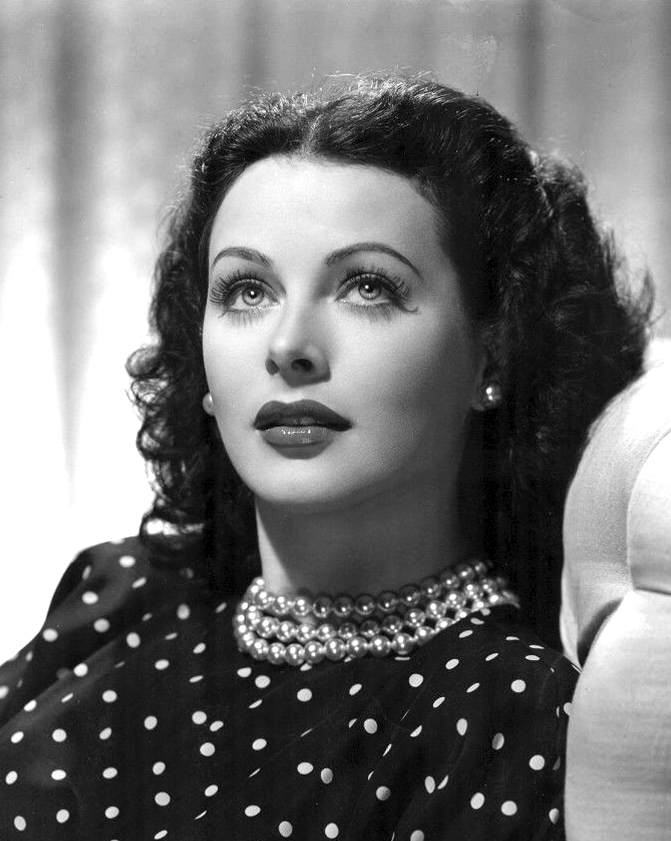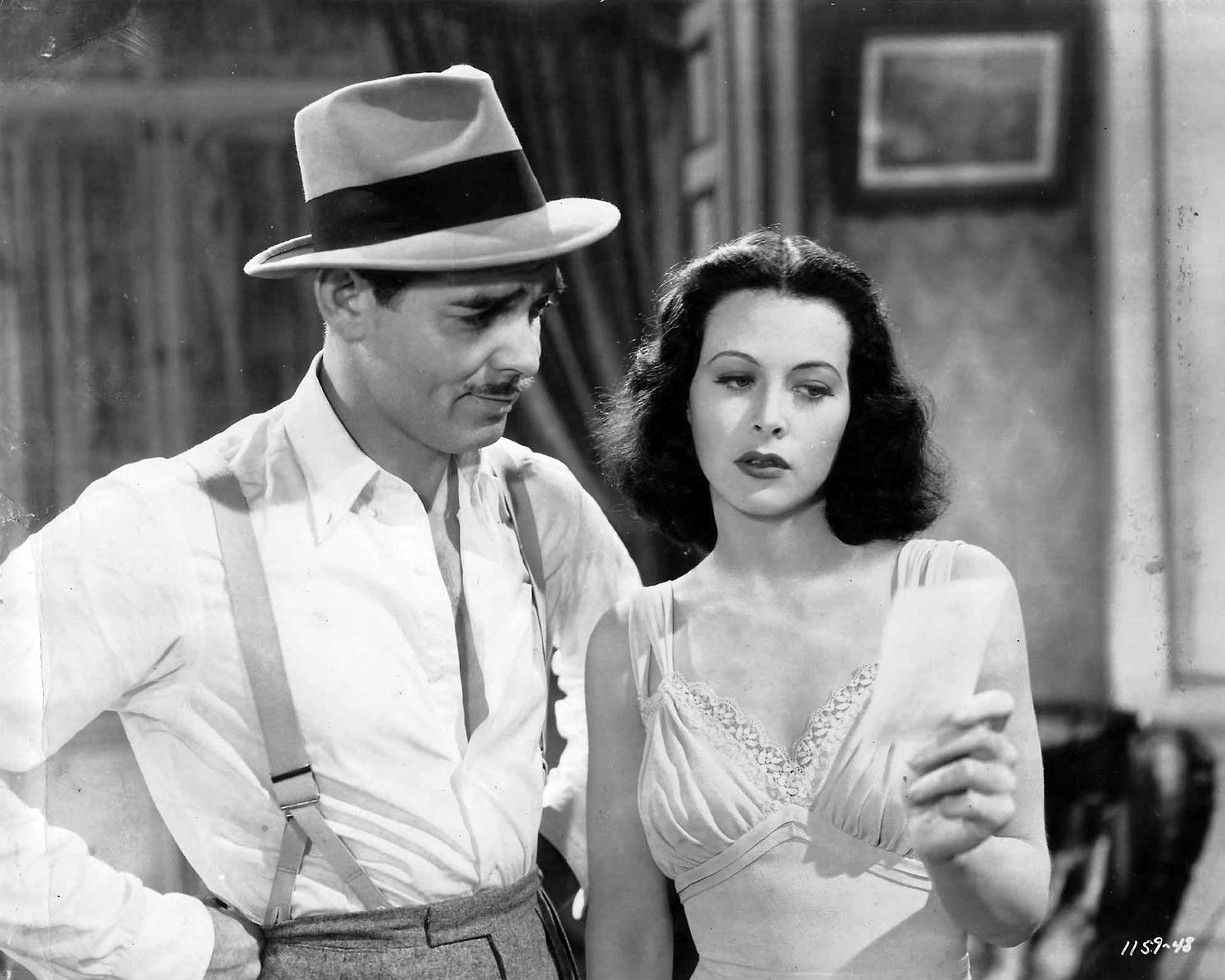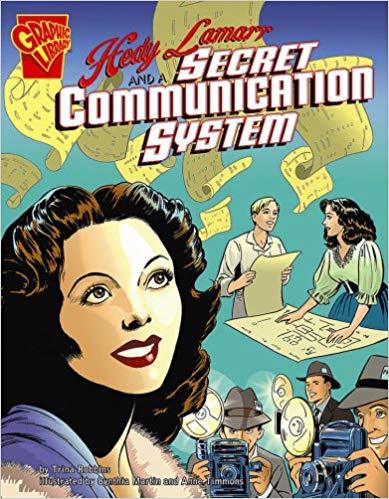HEDY LAMARR
Actress, Inventor, Mother of Wi-fi



“All creative people want to do the unexpected.”
Hedy Lamarr was a prominent Austrian actress who fled rising fascism and a controlling husband to London in 1937. She settled in American to pursue acting. During World War 2, she and George Antheil developed the technology that forms the basis for WiFi, Bluetooth, and GPS.
Considered one of the most glamorous and beautiful actresses during the Golden Age of Hollywood, few people knew that Hedy Lamarr was also an inventor decades ahead of her time. During World War II, Lamarr invented a system that would later be called “spread spectrum communications,” which would allow United States submarines to guide their torpedoes without getting jammed and put off course by the enemy. The navy adopted the technology a decade later, and Hedy’s invention became the basis for today’s wi-fi, GPS, and Bluetooth technologies.
Hedy’s passions for acting and inventing started at an early age. She was born Hedwig Eva Kiesler, in Vienna, Austria, November 9th 1914. Her mother, a concert pianist, introduced her to the arts, signing her up for ballet and piano lessons, while her father, a bank director, would take her on long walks and talk to her about how things like printing presses and street cars worked. When she wasn’t dancing or playing the piano, Hedy was taking things like music boxes apart and putting them back together, just to see how they worked.
Before her career in Hollywood, Hedy was an actress in Austria, and was briefly married to a munitions dealer named Fritz Mandl. This marriage marked a dark period in Lamarr’s life, for not only was Mandl a domineering husband, his business partners had ties to the Nazi Party in Germany. Mandl thought of his wife as nothing but a pretty face, and forced her to play hostess and smile on demand. Sitting at the dinner table with her husband and his sinister friends, however, allowed Hedy to listen in on conversations about munitions and wartime weaponry. Just like listening to her father talk about street cars, Hedy learned a lot from these dinnertime conversations, and when she left the marriage and the country in 1937, Hedy took this knowledge with her.
When Hedy reached Hollywood, she became a true renaissance woman. She acted in big Hollywood films such as Samson and Delilah and Boom Town. While in Hollywood, she metaviation innovator Howard Hughes, who saw Hedy for the genius she was, and gave her a small set of inventing equipment for her movie trailer. From then on, Hedy was able to work on her inventions on-set, between takes. She invented an upgraded stoplight, a tablet that dissolved in water to create soda similar to Coca-Cola, and, after reading books on fish and birds, she designed an airplane wing that would make Howard Hughes’ airplanes fly faster. Her greatest invention, however, would come in 1942, when she and her composer friend George Antheil developed a mechanical device that hopped between radio frequencies at intervals, instead of sticking to one single frequency. Called a “Secret Communication System,” Patent No. 2,292,387 is a device that sent messages using 88 different radio frequencies (a nod to the 88 keys on a piano) skipping from frequency to frequency throughout the message in seemingly random order. This system protected against two things: enemy spies intercepting messages, and enemy armies jamming radio signals. As long as the sender and receiver knew the order in which the message would switch frequencies, the message came through loud and clear. Any spy trying to listen in would not stand a chance against so many possible sequences. It would also allow a submarine to maintain contact with its radio-operated torpedoes, because they could use 88 frequencies to hit their target, while the enemy might only succeed in jamming a few. This system, later called “spread spectrum communication,” would serve as the basis for Wi-Fi, GPS, and Bluetooth technologies, which have reshaped the way we communicate around the world.
While Hedy’s invention was revolutionary, it would not be recognized or adopted right away. The United States military was wary of using technology developed by outside scientists, and the possibilities that Hedy’s Secret Communications System opened up would not be recognized until decades later. In spite of this, Hedy contributed to the war effort during World War II by selling war bonds, continued her career as a Hollywood actress well into the 1950’s, married six men and had three children. In 1997, the Electronic Frontier Foundation awarded Hedy and George Antheil their Pioneer Award. That same year Hedy was the first woman to receive the BULBIE Gnass Spirit of Achievement Award, considered the “Oscar” of inventing. Hedy died in 2000, and was posthumously inducted into the National Inventors Hall of Fame in 2014.
Further Reading
- Alice George. "Thank This World War II-Era Film Star for Your Wi-Fi." Smithsonian. (https://www.smithsonianmag.com/smithsonian-institution/thank-world-war-ii-era-film-star-your-wi-fi-180971584/)
- Colleen Cheslak. "Hedy Lamarr." National Women's History Museum (https://www.womenshistory.org/education-resources/biographies/hedy-lamarr)
Awards
1997 Electronic Frontier Foundation’s Pioneer Award
1997 BULBIE Gnass Spirit of Achievement Award
2014 Induction into the National Inventors Hall of Fame






